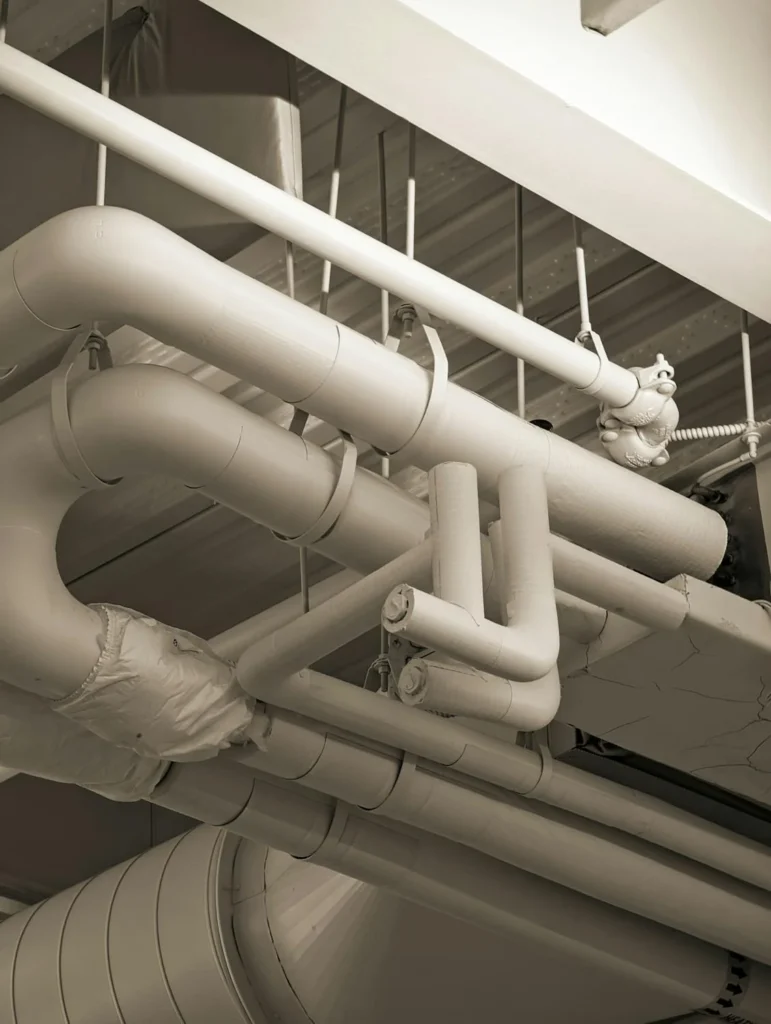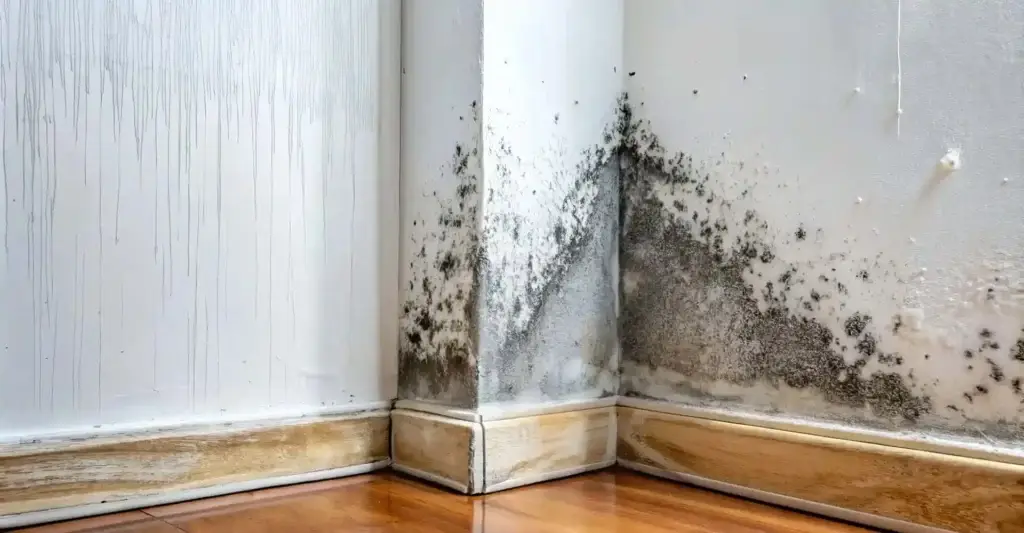Quick answer
Awaab’s Law legally protects UK tenants from damp & mould, forcing landlords to fix reported issues fast for healthier homes. The 2024 updates further reinforce this, introducing requirements like annual property inspections, Damp and Mould Safety Certificates, and increased penalties for landlord non-compliance.
Legislative changes for UK landlords
Almost 1 million homes suffer from issues of damp and mould annually in the UK. With further legislative changes implemented in 2024, there’s even more pressure for landlords to address them more urgently than ever before and quickly remove the mould. The 2024 update builds upon Awaab’s Law (2023) to further protect tenants from unsafe homes caused by damp and mould.
In this Ideal Response blog article, we revisit Awaab’s Law and what the updated 2024 UK housing legislation means for both tenants and landlords. The article will answer the following questions:
- What is Awaab’s Law?
- How does the 2024 update impact Awaab’s Law?
- What are the health risks associated with damp and mould?
- What are the causes of mould in homes?
- How can Ideal Response support tenants and landlords?
So, if you are a tenant or landlord, this five-minute read will help to clear up any questions you may have about Awaab’s Law and what the 2024 update means for you.
What is Awaab’s Law?
The tragic passing of Awaab Ishak in 2020 put a spotlight on the serious risks to health that mould-related issues in homes can cause. Awaab’s Law was introduced to mandate significantly stricter timeframes to address mould and damp in properties that are rented. It was integrated within the Social Housing (Regulation) Act 2023. The inclusion of Awaab’s Law is aimed at supporting tenants who raise concerns about potentially unsafe and harmful conditions within their rented property no matter if it is social housing or private rental.
But what is the impact of Awaab’s Law on both tenants and landlords?
Let’s start with landlords.
The impact of Awaab’s Law on landlords
Landlords must act quickly by law
New, stricter timelines for landlords to inspect and remediate issues reported by tenants. Failure to do so, will incur significant financial penalties.
Landlords must be more proactive
This includes ensuring regular property inspections and ensuring adequate ventilation and working heating systems.
Landlords are more accountable
This means that no matter if a social housing landlord or private landlord, they will be more regulated and monitored. For example, by the Regulator of Social Housing.
The impact of Awaab’s Law on tenants
Faster resolution to tenant complaints
Rather than delays of months, landlords need to act quickly as stipulated by the new guidance. This means tenants complaints should be spending less time waiting and more time enjoying the comfort of a safe home.
More power for tenants to hold landlords accountable
Awaab’s Law empowers tenants with the power and backing by law, to hold landlords fully accountable for poor living conditions caused by damp and mould.
Landlords are more accountable
This means that no matter if a social housing landlord or private landlord, they will be more regulated and monitored. For example, by the Regulator of Social Housing.
An uplift in better and healthier homes
The significance of Awaab’s Law will hopefully uplift the quality of the UKs rented housing stock, ensuring that the risks that mould threatens human health is quashed.
How does the 2024 update impact Awaab’s Law?
To ensure that Awaab’s Law continues to be effective, the UK government introduced an update this year which helped to protect tenants further. Outlined below are some of what was introduced.
- By law, landlords must schedule annual inspections of properties that have had historical cases of damp or mould.
- A Damp and Mould Safety Certificate (DMSC) must be given to the tenant to confirm inspection of the property has happened and has no risk from hazards.
- If landlords fail to adhere to the regulated timeframes when addressing any issues such as mould or damp, they can now be fined up to £30,000 or banned from renting any property.
- Tenants can claim compensation if they have been suffering from damp and mould within their property. This is specifically for those with prolonged damp and mould issues.
- Providers of social housing must report to the Regulator of Social Housing on all damp and mould cases which aren’t resolved.
What are the health risks associated with damp and mould?
Before we get into the health risks associated with damp and mould, it’s important to reiterate the magnitude of the problem within England. Here’s three shocking statistics, all of which could easily be avoided.
- Roughly 4% of all households in England are affected by damp and mould.
- Nearly one fifth of tenants of social housing are more likely to experience instances of mould growth.
- It’s estimated that 50% of people who rent their home, have experienced damp and mould in their home.
The risk to health due to damp and mould
According to Public Health England, 20% – 50% of asthma cases in the UK are linked to exposure to indoor mould. But it’s not just respiratory issues that can be affected by damp or mould. The government website also states that other physical effects can include:
- Eye irritation which can lead to allergic conjunctivitis.
- Eczema, and associated conditions.
- Other fungal infections.
Vulnerable people such as the elderly and allergy sufferers are most at risk to the physical effects caused by damp and mould. However, as well as the physical effects, prolonged exposure to damp and mould conditions can have a negative effect on wellbeing. It can cause increased levels of anxiety and depression.
What are the common causes of damp and mould?
There can be several different factors within the building that are causing instances of damp and mould. These include:
Condensation
This is one of the most common causes in the UK. Signs significant condensation is present include the presence of black mould around windows and doors. It’s usually more common in rooms where there is a higher level of water vapour such as bathrooms. Another cause of condensation is lack of adequate heating for the property.
Leaking pipes
Leaking pipes can often be hidden within walls, floors, or ceilings and exceptionally difficult to detect before it’s too late and mould has already started to appear. If you suspect a water leak, you may need a professional water leak detection specialist. They will help identify the cause and location of the leak.
Leaking gutters, downpipes and roofing
Gutters and downpipes can often get blocked and excess water can overflow and stream down the walls of the property causing significant damp patches. Roof leaks are another common cause of damp or mould. A clear sign of a damaged roof is damp patches appearing on the ceiling.
Rising damp
Common in older buildings where the damp-proof course has deteriorated, rising damp can often happen because the moisture from the ground is travelling up through the walls. This can result in damp patches on walls which start from the skirting boards.
Penetrating damp
External defects such as cracks in brickwork can cause rainwater to get into the property. Older buildings in areas exposed to wind-driven rain are most susceptible.
How Ideal Response can support tenants and landlords
No matter if you’re a landlord looking to meet your legal obligations for the removal of mould or a tenant seeking relief from continuous mould issues, we’re here to help.
Any type of mould cleaning and removal requires a deep understanding of not just how to clean it effectively but also, how to remove it permanently. Our comprehensive mould remediation service is available for all property types. It is also backed by a one-year guarantee if you have had a survey prior to any remediation works have taken place.
The typical mould clean-up and remediation process includes:
Damp survey
Undertaken by one of our accredited surveyors, the damp survey will highlight the root cause of any instances of damp or mould. You’ll also receive a comprehensive report which recommends the course of action needed to put things right. There are a range of options, much like a building survey, so you can choose which best fits you.
HEPA vacuum treatment
By using HEPA technology, 99.9% of microscopic mould particles (airborne spores) are captured which reduces the potential spread of instances of mould. And helps reduce any respiratory problems caused by these particles in the air whilst improving air quality.
Manual washdown & fungicidal treatment
A key part of the mould remediation work is to ensure that the mould is killed at the root, so it doesn’t return. That’s why all surfaces are wiped down with a specialist safe fungicidal cleaning solution. Following this, an additional solution is applied which creates a barrier between the surface and surrounding air which protects for longer and helps to prevent any possible future mould growth.
ULV fogging
Usually, the final stage of mould remediation work, ULV fogging technology is used to eliminate any remaining mould spores, decontaminate the air and neutralise any unpleasant odours.
In summary
The introduction of Awaab’s Law is a significant turning point in housing standards across the UK, which protects tenants from the harmful effects of mould whilst holding landlords to account. But just legal compliance is not the answer, proactive prevention and professional remediation are essential to maintaining safe, healthy homes.
If you are either a tenant or landlord and need support in tackling damp and mould if your property, contact one of the Ideal Response team who will happily answer any questions and advise on what the best course of action is to take.
Awaab's law: Frequently asked questions
What is Awaab's Law?
Awaab’s Law, integrated into the Social Housing (Regulation) Act 2023, mandates strict legal timelines for landlords to address reported hazards like damp and mould in rented properties. Named after Awaab Ishak, its goal is to ensure safer, healthier living conditions and hold landlords accountable across the UK.
Who does Awaab's Law apply to?
Initially, Awaab’s Law primarily applies to social housing landlords in England, imposing new legal duties to respond to safety concerns. While directly focused on the social rented sector from October 2025, its principles are expected to raise housing quality expectations for all UK tenants.
What are landlords' new obligations under Awaab's Law?
From October 27, 2025, social landlords must investigate emergency hazards within 24 hours and significant hazards within 10 working days. If a hazard is confirmed, they must start necessary repairs within 7 days and complete them within a reasonable timeframe, or provide suitable alternative accommodation at their expense.
What rights do tenants have under Awaab's Law?
Awaab’s Law empowers tenants with the legal right to expect prompt action from their landlord on housing hazards like damp and mould. They can challenge non-compliance, seek faster resolution for complaints, and may be able to claim compensation or be rehoused if issues are not fixed within specified timeframes.
When did Awaab's Law come into effect?
Awaab’s Law was enacted as part of the Social Housing (Regulation) Act 2023. The first phase of its mandatory requirements, including fixed timelines for damp and mould hazards, is set to come into force for social landlords on October 27, 2025. Further phases addressing a wider range of hazards are planned for 2026 and 2027.
Does Awaab's Law apply to private landlords?
Currently, the mandatory requirements of Awaab’s Law (with fixed timelines) apply to social housing landlords from October 2025. While the government intends to extend similar principles, specific regulations for the private rented sector regarding Awaab’s Law’s timeframes are still subject to further consultation and future legislation.
What are the penalties for landlords not complying with Awaab's Law?
Social landlords failing to comply with Awaab’s Law’s timeframes can face significant consequences, including legal action from tenants for breach of tenancy. Persistent non-compliance may lead to substantial financial penalties (potentially up to £30,000 or more as per general regulatory powers) and intervention from the Regulator of Social Housing, who can impose fines or other sanctions.

Chris Hedges - Head of Marketing
With over 25 years' experience, Chris is adept at defining and driving strategy, while also enjoying hands-on operational delivery. He believes in an equal blend of creativity and analytical scrutiny, always finding inventive ways to achieve objectives, underpinned by evidence. Chris’s philosophies are simple: don't overcomplicate, always prioritise customer experience, and bend the rules just enough to cut through the noise and drive momentum and growth.





















